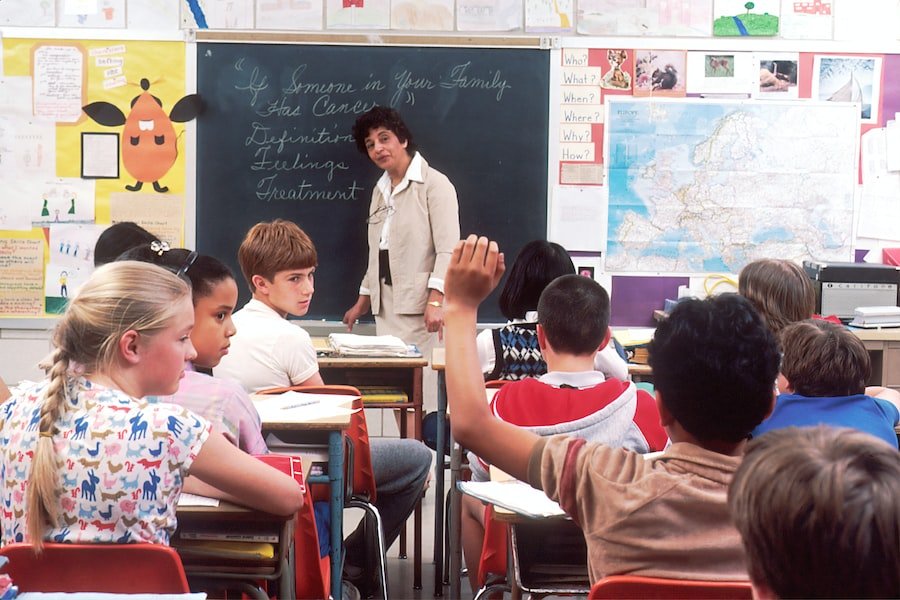

Navigating Norwegian Education System: Vocabulary for Students and Educators
The Norwegian education system is known for its high quality and emphasis on equality. Education is highly valued in Norway, and the government invests heavily in providing free education for all its citizens. The system is divided into three levels: primary education, secondary education, and higher education.
Primary education in Norway begins at the age of six and lasts for seven years. It is compulsory for all children and is provided by both public and private schools. The curriculum focuses on a broad range of subjects, including Norwegian, mathematics, science, social studies, physical education, and arts.
Secondary education in Norway is divided into two levels: lower secondary school and upper secondary school. Lower secondary school lasts for three years and is compulsory for all students. Upper secondary school is not compulsory but is necessary for further education or employment. Students can choose between academic or vocational tracks based on their interests and career goals.
Higher education in Norway is offered at universities, university colleges, and specialized institutions. The country has a strong tradition of research and innovation, and its universities are known for their high academic standards. Higher education in Norway is free for all students, regardless of nationality.
Table of Contents
ToggleVocabulary for Students and Educators
In the Norwegian classroom, students and educators use common words and phrases to communicate effectively. Here are some examples:
– Hei (Hello)
– Takk (Thank you)
– Ja (Yes)
– Nei (No)
– Vær så snill (Please)
– Unnskyld (Excuse me)
– Hva betyr det? (What does that mean?)
– Kan du gjenta det? (Can you repeat that?)
– Jeg forstår ikke (I don’t understand)
– Lykke til! (Good luck!)
Educators also use specific vocabulary related to teaching and learning:
– Læreplan (Curriculum)
– Undervisning (Teaching)
– Lærer (Teacher)
– Elev (Student)
– Klasse (Class)
– Skole (School)
– Leksjon (Lesson)
– Prøve (Test)
– Karakter (Grade)
– Oppgave (Assignment)
Understanding the Norwegian Classroom
The Norwegian classroom culture is characterized by a focus on equality, collaboration, and active learning. Students are encouraged to participate actively in discussions and express their opinions. Teachers create a supportive and inclusive learning environment where every student feels valued and respected.
Teaching methods in Norwegian schools emphasize student-centered learning. Teachers use a variety of instructional strategies, such as group work, project-based learning, and hands-on activities, to engage students and promote critical thinking skills. The goal is to develop independent learners who can apply their knowledge in real-life situations.
Assessment in Norwegian schools is based on a combination of formative and summative assessments. Formative assessments, such as class discussions and group work, provide ongoing feedback to students and help them monitor their progress. Summative assessments, such as tests and exams, measure students’ achievement at the end of a unit or course.
Norwegian Language Classes for International Students
Norway offers language classes for international students who want to learn Norwegian. These classes are designed to help students develop their language skills and integrate into Norwegian society. The classes cover various aspects of the Norwegian language, including grammar, vocabulary, pronunciation, and conversation.
Learning Norwegian is important for international students because it allows them to communicate effectively with locals, make friends, and fully immerse themselves in the Norwegian culture. It also opens up more opportunities for employment and further education in Norway.
The language classes for international students are offered at different levels, from beginner to advanced. Students can choose between intensive courses that last for a few weeks or longer courses that span several months. The classes are taught by experienced language instructors who use a communicative approach to teaching.
Benefits of Learning Norwegian
There are several advantages to being bilingual in Norway. First, knowing Norwegian allows international students to fully participate in social and cultural activities. They can engage in conversations, read books and newspapers, watch movies, and understand the local customs and traditions.
Second, learning Norwegian opens up more career opportunities for international students. Many employers in Norway require proficiency in the Norwegian language, especially for jobs that involve direct interaction with customers or clients. Being bilingual gives international students a competitive edge in the job market.
Third, learning Norwegian helps international students build stronger connections with locals. Norwegians appreciate when foreigners make an effort to learn their language and culture. Speaking Norwegian can help international students establish meaningful relationships and feel more integrated into the community.
Choosing a Norwegian Language School

When choosing a Norwegian language school, there are several factors to consider. First, you should look for a school that offers courses at your desired level of proficiency. Some schools specialize in beginner courses, while others cater to more advanced learners.
Second, consider the teaching methods used by the language school. Look for schools that emphasize interactive and communicative approaches to language learning. These methods are proven to be more effective in developing language skills compared to traditional lecture-style classes.
Third, research the reputation of the language school. Read reviews from former students and check if the school is accredited by recognized organizations. A reputable language school will have experienced instructors, well-designed curriculum, and a supportive learning environment.
Some popular language schools in Norway include the University of Oslo’s International Summer School, Lingu Language School, and Folkeuniversitetet. These schools offer a wide range of Norwegian language courses for international students of all levels.
Tips for Learning Norwegian
Learning a new language can be challenging, but with the right strategies, it can also be rewarding. Here are some tips for learning Norwegian:
1. Immerse yourself in the language: Surround yourself with Norwegian as much as possible. Listen to Norwegian music, watch Norwegian movies, and try to have conversations with native speakers.
2. Practice regularly: Consistency is key when learning a new language. Set aside dedicated time each day to practice your Norwegian skills, whether it’s through reading, writing, speaking, or listening.
3. Use language learning apps and resources: There are many online resources and language learning apps available that can help you practice your Norwegian skills. Duolingo, Memrise, and Babbel are popular options.
4. Find a language exchange partner: Look for language exchange programs or websites where you can connect with native Norwegian speakers who are learning your native language. This way, you can practice speaking Norwegian while helping them with their language skills.
5. Travel to Norway: If possible, visit Norway and immerse yourself in the culture and language. Being surrounded by native speakers will accelerate your learning and give you a deeper understanding of the language.
Avoid common mistakes when learning Norwegian, such as relying too heavily on English translations, neglecting pronunciation practice, and not practicing speaking enough. Remember that making mistakes is part of the learning process, so don’t be afraid to take risks and practice speaking as much as possible.
Norwegian Language Courses for Educators
Norwegian language courses for educators are designed to help teachers develop their language skills and effectively communicate with students and colleagues. These courses focus on teaching vocabulary and phrases specific to the education field, as well as improving pronunciation and fluency.
It is important for educators to learn Norwegian because it allows them to better understand their students’ needs and provide effective instruction. It also helps educators build stronger relationships with students and parents, as they can communicate more easily and accurately.
The Norwegian language courses for educators are offered by various institutions, including universities, teacher training colleges, and language schools. Some courses are specifically designed for educators, while others are open to anyone interested in learning Norwegian.
Resources for Learning Norwegian
There are many online resources available for learning Norwegian. These resources can help you practice your language skills, expand your vocabulary, and improve your pronunciation. Here are some popular online resources:
1. Duolingo: Duolingo is a free language learning app that offers courses in Norwegian. It uses gamification techniques to make learning fun and engaging.
2. Memrise: Memrise is another language learning app that offers Norwegian courses. It focuses on vocabulary building and uses spaced repetition to help you remember words and phrases.
3. Babbel: Babbel is an online language learning platform that offers Norwegian courses for beginners and intermediate learners. It provides interactive lessons and exercises to improve your speaking, listening, reading, and writing skills.
4. iTalki: iTalki is a language exchange platform where you can find native Norwegian speakers who are willing to have conversations with you in exchange for practicing their own language.
5. Norsk på 1-2-3: Norsk på 1-2-3 is a comprehensive online course for learning Norwegian. It covers all aspects of the language, including grammar, vocabulary, pronunciation, and conversation.
In addition to online resources, consider joining language exchange programs or finding a tutor who can provide personalized instruction and feedback.
Advantages of Bilingual Education in Norway
Bilingual education in Norway has several benefits for both students and educators. First, it promotes cultural diversity and understanding. Bilingual education allows students to maintain their native language while also learning Norwegian, fostering a sense of pride in their heritage and promoting cross-cultural communication.
Second, bilingual education enhances cognitive skills. Research has shown that bilingual individuals have better problem-solving abilities, improved memory, and enhanced creativity compared to monolingual individuals. Learning two languages also improves overall academic performance.
Third, bilingual education prepares students for a globalized world. In today’s interconnected society, being bilingual is a valuable asset. It opens up more opportunities for international travel, employment, and higher education.
Success stories of bilingual education in Norway can be seen in the achievements of immigrant students who have excelled academically and gone on to pursue successful careers. Bilingual education has helped these students overcome language barriers and achieve their full potential.
The Norwegian education system is known for its high quality and emphasis on equality. Education is highly valued in Norway, and the government invests heavily in providing free education for all its citizens. The system is divided into three levels: primary education, secondary education, and higher education.
Learning Norwegian is important for both students and educators in Norway. It allows international students to fully participate in social and cultural activities, opens up more career opportunities, and helps build stronger connections with locals. For educators, learning Norwegian enables effective communication with students and colleagues and enhances their understanding of student needs.
There are many resources available for learning Norwegian, including online courses, language exchange programs, and language learning apps. By taking advantage of these resources and implementing effective learning strategies, anyone can learn Norwegian and reap the benefits of bilingualism in Norway. So why wait? Start your language learning journey today!
If you’re a student or educator navigating the Norwegian education system, you may find it helpful to brush up on your vocabulary. In addition to our article on Navigating Norwegian Education System: Vocabulary for Students and Educators, we also have a related article on How to Use Clauses with Question Words in Norwegian. This article provides essential guidance on constructing sentences using question words in Norwegian. Whether you’re asking for directions or seeking clarification in the classroom, this article will help you communicate effectively. Check it out here.
FAQs
What is the Norwegian education system?
The Norwegian education system is a publicly funded system that provides education to all citizens and residents of Norway. It is divided into primary, lower secondary, upper secondary, and tertiary education levels.
What are some important terms to know in the Norwegian education system?
Some important terms to know in the Norwegian education system include “barnehage” (kindergarten), “grunnskole” (primary and lower secondary school), “videregående skole” (upper secondary school), and “universitet” (university).
What is the language of instruction in Norwegian schools?
The language of instruction in Norwegian schools is Norwegian. However, some schools may offer bilingual education in both Norwegian and English.
What is the grading system in Norwegian schools?
The grading system in Norwegian schools is based on a scale from 1 to 6, with 6 being the highest grade. A grade of 4 is considered a passing grade.
What is the role of the Sami language in Norwegian education?
The Sami language is recognized as an official language in Norway and is taught in some schools in areas where the Sami people live. The Sami people have the right to receive education in their own language.
What is the role of vocational education in Norwegian schools?
Vocational education is an important part of the Norwegian education system and is offered at the upper secondary level. It provides students with practical skills and knowledge that can be applied in the workforce.
If you want to learn Norwegian, you can register for classes here. We look forward to hearing from you and helping you become fluent in Norwegian.





